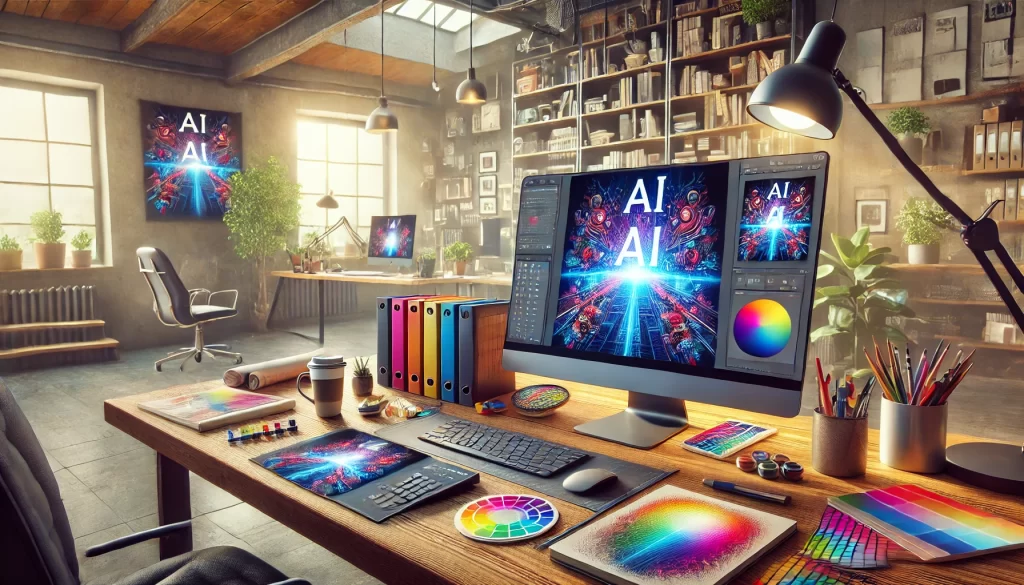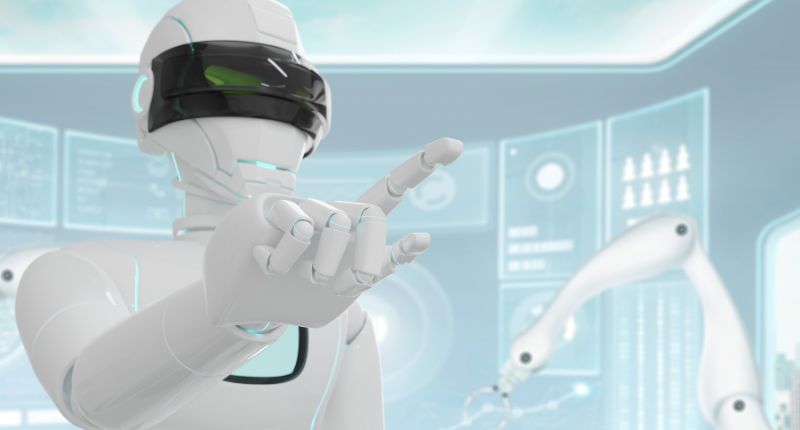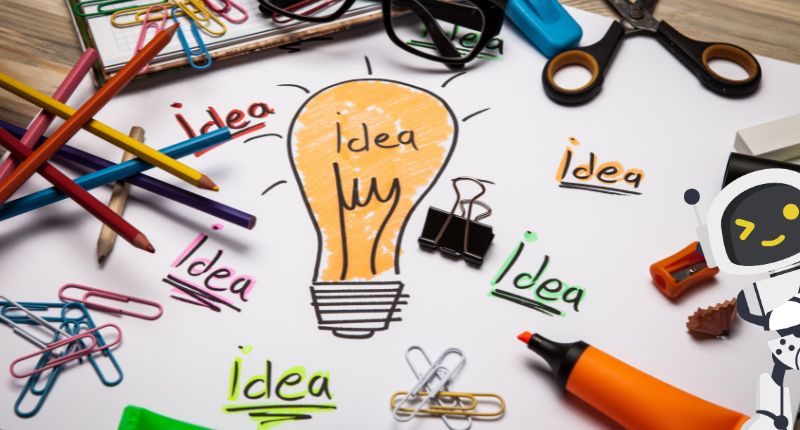In recent years, artificial intelligence (AI) has revolutionized the way we create art. One of the most fascinating applications of AI in the creative industry is the generation of album covers, book covers, illustrations, and other graphic designs. These AI-generated covers have gained popularity for their ability to blend creativity with technology, offering new possibilities for artists, designers, and creators. In this post we will learn how to make AI covers with easy tools and techniques.
Whether you’re a musician looking for a unique album cover, an author needing an eye-catching book cover, or just someone interested in exploring the creative potential of AI, this guide will walk you through the process of making AI covers. We’ll dive into the steps, tools, and techniques you can use to create stunning, AI-generated artwork. let’s explore How to Make AI Covers.
Table of Contents
1. Understanding AI-Generated Art
AI-generated art refers to artwork created through algorithms that use machine learning and neural networks to mimic human creativity. These systems are trained on vast datasets of existing art, photos, and illustrations to understand patterns, color palettes, and compositional rules. The result is a digital creation that often pushes the boundaries of conventional design and offers an entirely new perspective.
The rise of AI tools in the art world has sparked debates on authorship, originality, and creativity. However, many artists and creators have embraced these tools, using them as a way to enhance their artistic process rather than replace it. AI allows for rapid prototyping, idea exploration, and the generation of complex, imaginative visuals that would be difficult to create manually.
2. Types of AI Tools for Creating Covers
There are several types of AI tools that can assist you in generating cover art, each offering unique features and capabilities.
2.1 Text-to-Image Models
Text-to-image AI models, such as DALL·E 2 and MidJourney, generate images based on textual descriptions. These tools are incredibly powerful because they allow users to describe the scene or visual style they want to achieve in plain language, and the AI creates an image that matches the description.
For example, you could enter a prompt like “a futuristic cityscape at sunset with neon lights” and the AI will generate a visual representation of that description. The flexibility of text-to-image models makes them ideal for album covers, book covers, and posters, where specific themes or aesthetics are important.
2.2 Style Transfer Tools
Style transfer is a process where an AI takes an existing image and applies the artistic style of another image to it. Tools like DeepArt.io and DeepDream utilize this technique, allowing users to take a photograph and transform it into the style of famous artists such as Van Gogh or Picasso.
For cover art, this can be particularly useful if you want to create a unique design by blending a photograph with a certain artistic style. For instance, you could take a photo of a musician and transform it into a cover that resembles a painting by a renowned artist, adding depth and texture to the design.
2.3 Generative Adversarial Networks (GANs)
Generative Adversarial Networks (GANs) are another powerful tool for generating AI art. These networks consist of two parts: the generator, which creates images, and the discriminator, which evaluates them. The generator improves its output by learning from the discriminator’s feedback until it produces realistic and high-quality images.
Artbreeder is a popular platform that uses GANs to create AI art. Users can manipulate various traits of an image, such as color, style, and structure, to create unique cover designs. GANs are particularly well-suited for projects that require a high degree of customization and interactivity.
2.4 Deep Learning and Neural Networks
Deep learning techniques and neural networks power many AI-based art generators. These tools are trained to recognize patterns and learn how to generate realistic visuals. For example, tools like RunwayML offer advanced AI models that allow creators to manipulate and refine images using machine learning principles.
These models can produce highly detailed and imaginative results, making them an excellent choice for artists looking to push the envelope with their cover art designs.
3. Step-by-Step Guide to How to Make AI Covers
Now that you understand the different types of AI tools available, let’s break down the process of creating an AI cover. This guide will walk you through the steps of generating a cover from concept to completion.
3.1 Define the Concept
Before you start using any AI tools, it’s essential to have a clear idea of what you want your cover to convey. Are you designing an album cover, a book cover, or a poster? What mood, theme, or message do you want the cover to communicate? Your concept will guide your choice of colors, visuals, and style.
- Genre and Theme: Consider the genre of your music, book, or project. For a rock album, you might want something bold and edgy, while for a fantasy book cover, you might prefer a whimsical or mythical theme.
- Target Audience: Think about the audience you’re aiming for. What types of visuals are they likely to find appealing or intriguing? Young adult readers might appreciate a more minimalist design, while fans of sci-fi music might enjoy intricate, futuristic visuals.
- Mood and Atmosphere: Decide on the emotional tone of your cover. Is it dark and moody? Light and uplifting? Dreamy and surreal? The concept will help shape the aesthetic direction of your artwork.
3.2 Choose Your AI Tool
Based on your concept, choose the right AI tool for your project. If you’re looking for something abstract or surreal, text-to-image generators like DALL·E 2 or MidJourney may be the best option. If you want to blend a photograph with artistic elements, try style transfer tools like DeepArt.io.
- For Abstract Concepts: Use text-to-image AI models (DALL·E, MidJourney).
- For Blending Styles: Use style transfer tools (DeepArt, RunwayML).
- For Customization and Interactivity: Use GAN-based tools (Artbreeder, RunwayML).
3.3 Generate Your Image
Once you’ve selected your tool, it’s time to generate the image. This is the fun part, as you get to see your concept come to life.
- Text Prompts: If you’re using a text-to-image tool, write a detailed prompt that describes your vision. The more specific you are, the more accurate the result will be. For example, instead of “a forest,” try “a dark forest at night with glowing mushrooms and mist.”
- Image Customization: If you’re using a GAN-based tool, experiment with different settings to adjust aspects like color, texture, and composition. You may need to tweak the image multiple times to get it just right.
3.4 Refine and Edit the AI Output
AI-generated images are rarely perfect on the first try. Once you have a generated image, you might need to refine it. Some tools offer built-in editing options, such as cropping, adjusting brightness, or adding textures.
- Enhance Details: Use photo editing software like Adobe Photoshop or GIMP to enhance details and fix any imperfections in the image.
- Change Colors: AI models might generate colors that are too vivid or not in line with your vision. Adjust the color palette to better match your intended aesthetic.
- Layering Elements: If you need to combine multiple elements (e.g., a person, background, and text), you can use software like Photoshop to layer and arrange the components.
3.5 Adding Text and Final Touches
Once the image is finalized, it’s time to add text and finalize the cover design.
- Typography: Choose fonts that align with the theme and mood of your cover. The title and author name should be legible and complement the artwork.
- Spacing and Composition: Ensure that the text doesn’t overwhelm the image. Maintain proper spacing, balance, and alignment.
- Final Adjustments: Make any final adjustments to brightness, contrast, and color to ensure that the cover is visually appealing and ready for production.
4. Best Practices for Designing AI Covers
When designing AI-generated covers, consider the following best practices to ensure your artwork is professional and impactful.
4.1 **
Keep it Simple and Eye-Catching**
Less is often more in cover design. Avoid cluttering the cover with too many elements. Focus on creating a striking, memorable design that will grab attention even in a small thumbnail.
4.2 Consider the Target Audience
Remember that your cover serves as the first point of contact with your audience. Think about what resonates with them visually and emotionally. Tailor your design to meet the expectations and preferences of your target demographic.
4.3 Play with Styles and Themes
Experiment with different styles, such as surrealism, minimalism, or abstraction, depending on the project’s theme. AI tools offer endless possibilities for creative expression.
4.4 Experiment with Color Schemes
Colors are a key element of design. Make sure the color scheme aligns with the mood and theme of the cover. Use complementary or analogous colors to create harmony and visual interest.
4.5 Maintain High Resolution
For professional purposes, always ensure that your final cover is high resolution. A 300 DPI (dots per inch) image is ideal for print, while 72 DPI is sufficient for digital use. AI tools usually allow you to adjust the resolution before finalizing the image.
5. Popular AI Tools for Making Covers
Here are some of the best AI tools you can use to create stunning covers: How to Make AI Covers
5.1 DALL·E 2 by OpenAI
DALL·E 3 is one of the most advanced text-to-image models available today. It can generate incredibly detailed and creative artwork based on text prompts. With DALL·E, you can easily create unique covers by simply describing the elements you want.
5.2 MidJourney
MidJourney is another powerful text-to-image AI tool known for its artistic style and highly detailed visuals. It’s particularly good at generating fantasy, sci-fi, and abstract art.
5.3 Artbreeder
Artbreeder is a GAN-based platform that allows you to blend and manipulate images. It’s ideal for creating surreal and highly customizable cover art.
5.4 DeepArt.io
DeepArt.io uses neural networks for style transfer. You can upload your image and apply the style of famous artists to create a painterly, artistic look for your cover.
5.5 RunwayML
RunwayML is an AI platform that offers a range of creative tools, including image generation, style transfer, and video editing. It’s highly versatile for generating and refining cover designs.
5.6 Canva’s AI Image Generator
Canva, a popular graphic design tool, now integrates AI features to help users generate images based on text prompts. It’s an easy-to-use tool for beginners and provides templates for album and book covers.
6. Legal and Ethical Considerations in AI Art
As AI-generated art becomes more widespread, it’s important to understand the legal and ethical implications.
6.1 Copyright Issues
AI-generated artwork can raise questions about authorship and ownership. If you’re using AI tools to create your cover, make sure you understand the terms of use of the platform you’re working with, as some may retain ownership or usage rights over the generated images.
6.2 Ethical Implications
The use of AI in art also brings ethical concerns, such as the potential for artists and designers to lose work to automated tools. While AI can assist in creativity, it’s crucial to maintain a balance between human artistry and technological innovation.
If you’re looking to explore innovative ways to leverage AI, check out our post on 22 Artificial Intelligence Business Ideas: Unlocking Opportunities in the Digital Age. Discover actionable ideas to start or grow your business in this rapidly evolving digital landscape!
7. Conclusion: The Future of AI in Creative Design
AI-generated covers are transforming the creative industry, offering artists and designers unprecedented flexibility, speed, and creative possibilities. While the tools are powerful, they still rely on human input to create truly meaningful and impactful designs. As AI continues to evolve, we can expect even more advanced tools that will push the boundaries of art and design even further.
Whether you’re creating an album cover, book cover, or promotional material, AI offers exciting new opportunities to create unique and visually stunning artwork. By following the steps and best practices outlined in this guide, you’ll be well on your way to creating your own AI-generated cover that stands out in the crowded digital world.


